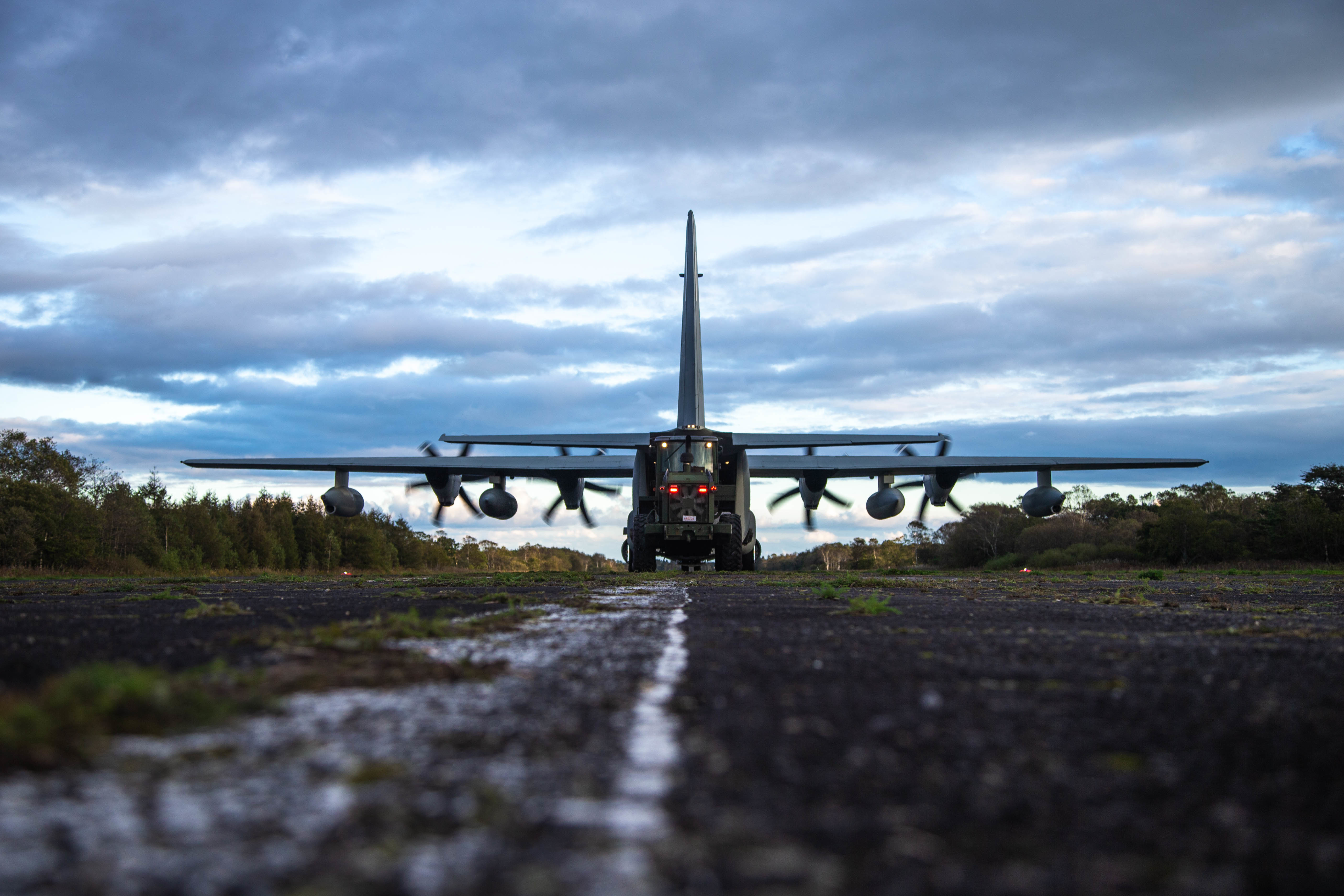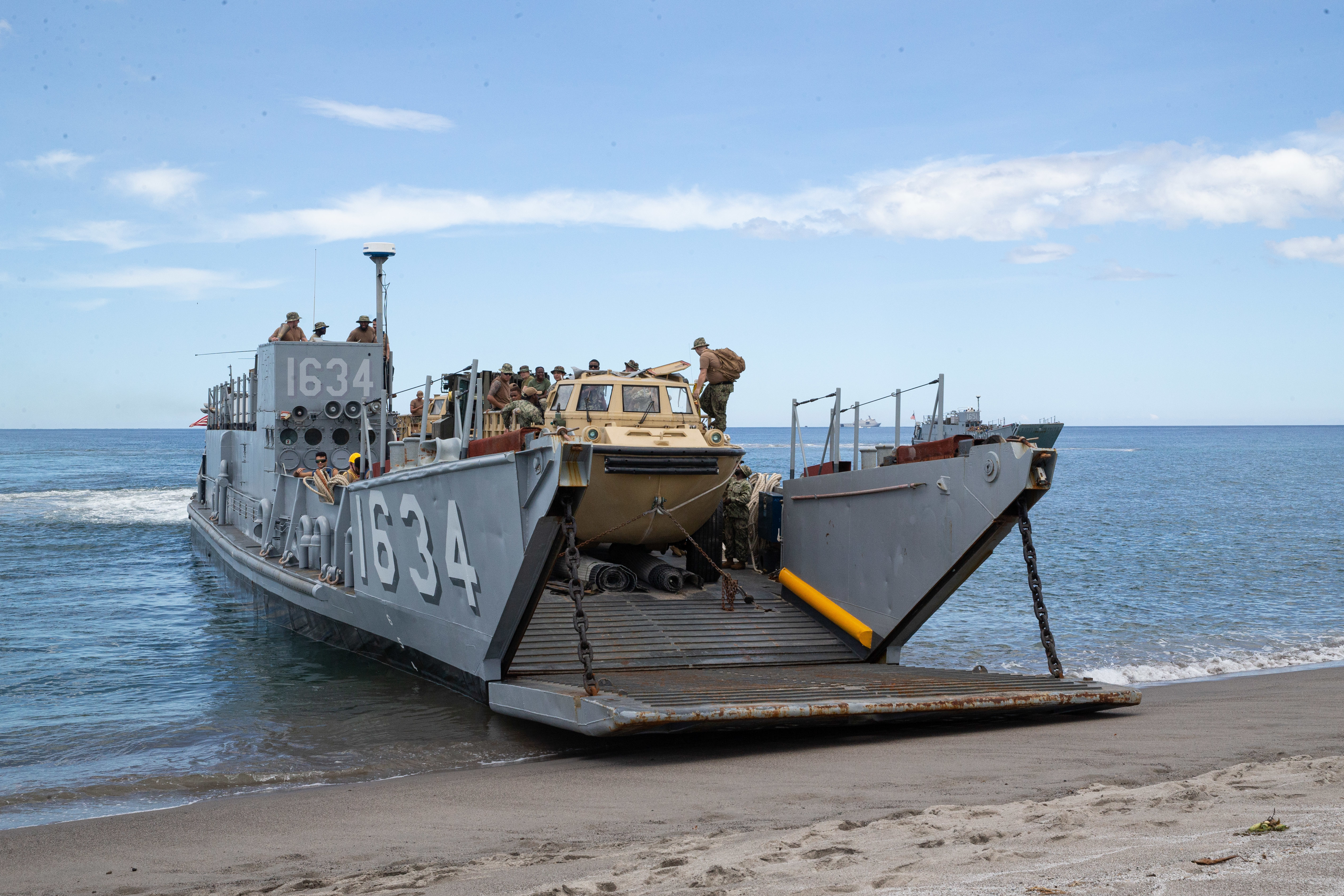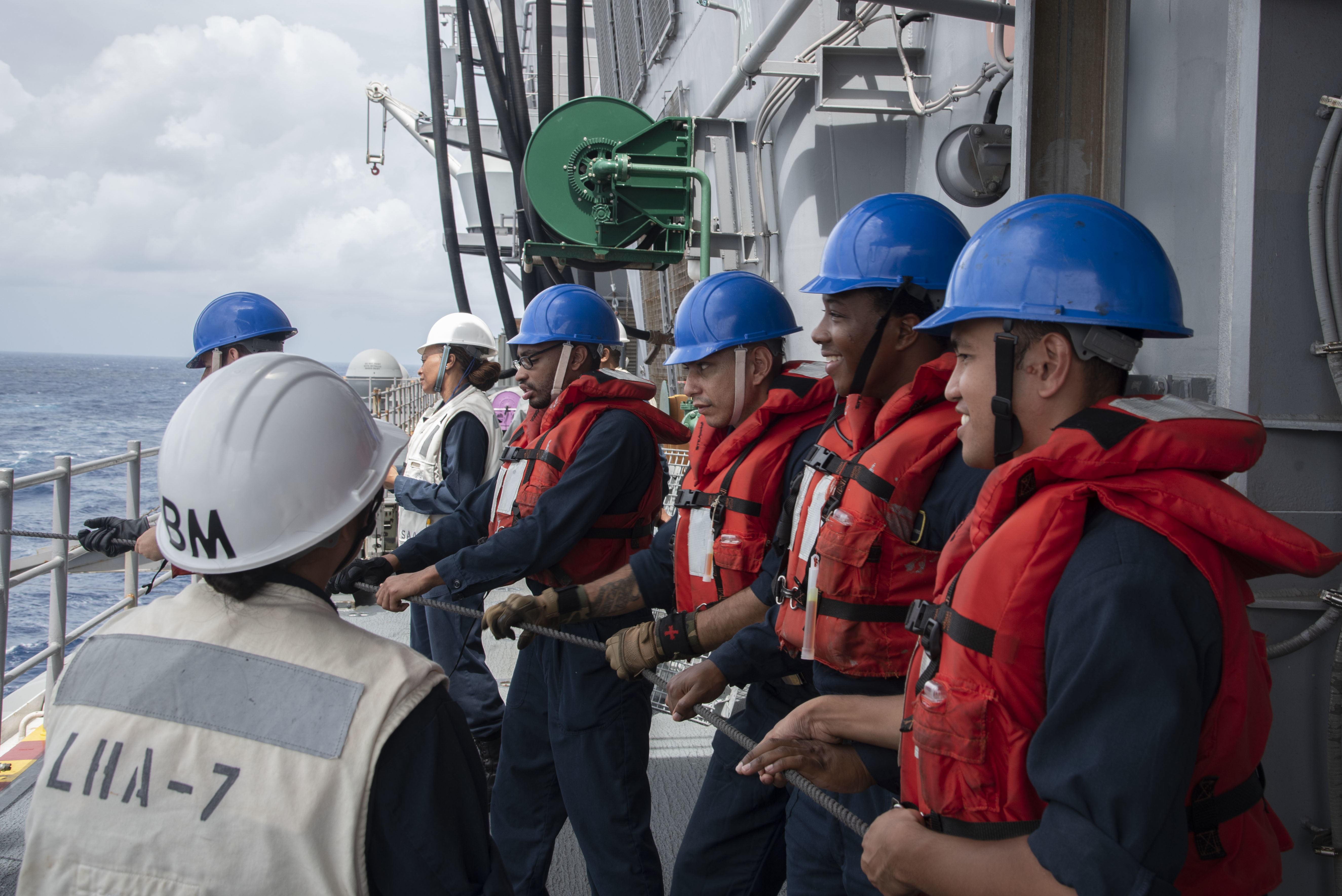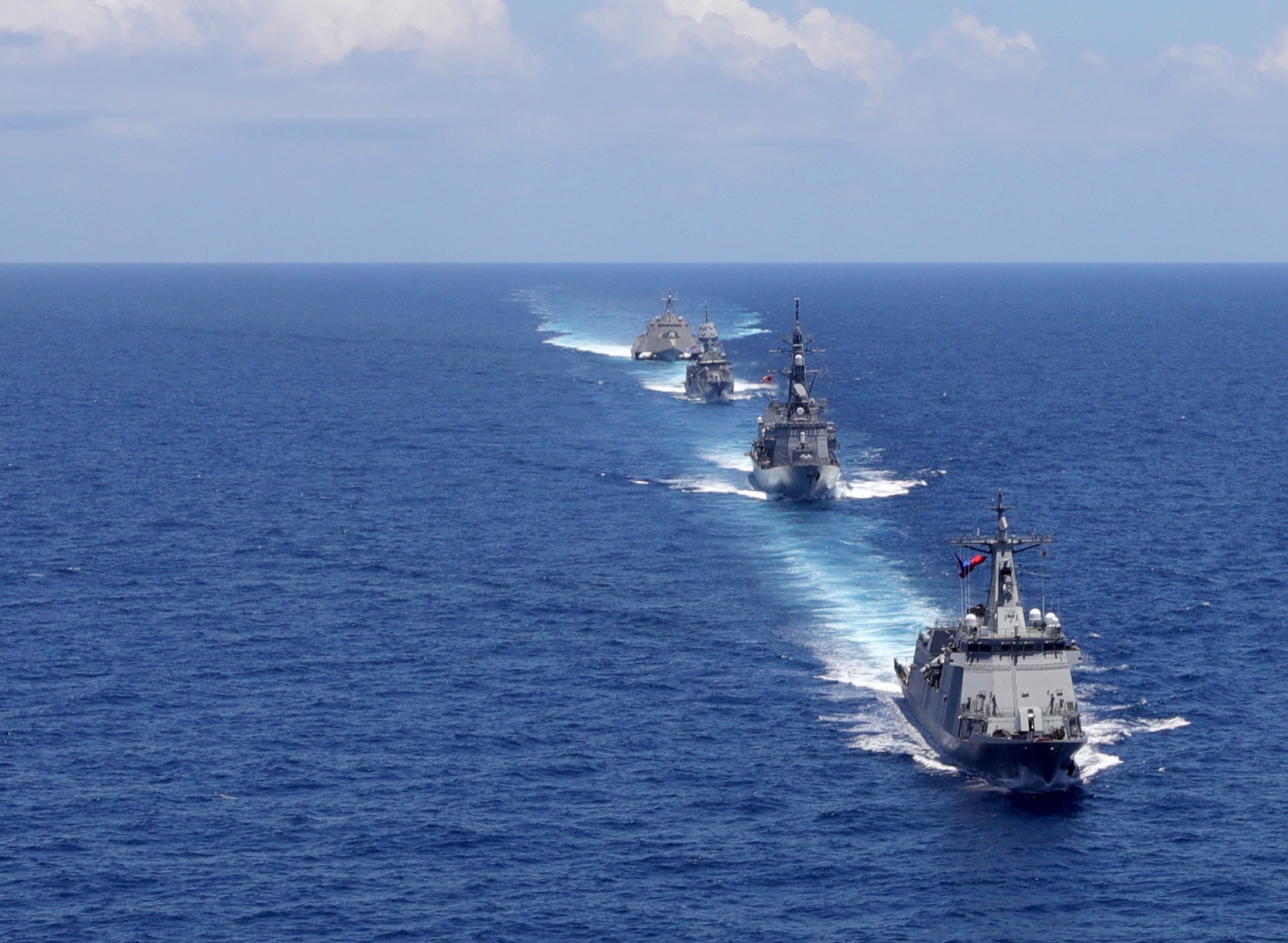
The United States and Japan are preparing for a large-scale joint exercise in Japan next month, the Japanese government announced today.
Exercise Keen Sword will involve 36,000 personnel, 30 ships and 270 aircraft from the two countries, along with the crews of four ships and three aircraft from Australia, Canada and the United Kingdom, according to a Friday news release from the Joint Staff Office (JSO) of the Japan Ministry of Defense.
The exercise will take place from Nov. 10-19 at Japan Self-Defense Force and U.S. Forces Japan facilities, the waters and airspace of Japan, on Tsutara Island, which lies west of Nagasaki, and on the southern islands of Amami Oshima and Tokonushima. It will include live-fire drills and focus on a wide-range of operations, including amphibious, ground, maritime, air and working within the space and cyber domains.
The exercise is aimed at improving interoperability between Japan and the U.S. Japan will send 26,000 personnel, 20 ships and 250 aircraft from across the JSDF, while the U.S. will send 10,000 personnel, 10 ships and 120 aircraft from Army, Navy, Air Force and Marine units in the Indo-Pacific and Japan, in addition to personnel from Space Force.
Canada will participate with two ships – HMCS Vancouver (FFH331) and HMCS Winnipeg (FFH338) – that have been operating in the region since participating in the Rim of the Pacific (RIMPAC) 2022 exercise and an aircraft.
Both ships are deployed to the Indo-Pacific under Operation Projection, the Canadian Armed Forces presence operations in the region, with Vancouver also tasked to sail around Japan under Operation Neon, which covers Canada’s contribution to maritime and aerial surveillance operations to enforce United Nations sanctions on North Korea.
Australia will participate with a single ship and a single aircraft, while the United Kingdom will send either offshore patrol vessel HMS Tamar (P233) or HMS Spey (P234), both of which are deployed in the region. Observers from Australia, Canada, France, India, New Zealand, the Philippines, South Korea, the United Kingdom and NATO have been invited to the exercise.
Keen Sword follows an extensive series of activities between the U.S. and its partners in the region, with the United States Marine Corps recently wrapping up bilateral exercise Kamandag 6 in the Philippines and Resolute Dragon 22 in Japan. The multilateral exercise known as Maritime Training Activity (MTA) Samasama Lumbas in the Sulu Sea – hosted by the Philippines, Australia and United States – concluded on Tuesday.

“Participating units included USS Benfold, USNS Dahl (T-AKR-312) and USNS Sacagawea (T-AKE-2), Naval Cargo Handling Battalion 11, Patrol Squadron 45, Helicopter Maritime Squadron-51, Japan Maritime Self-Defense Forces (JMSDF), and approximately 1,600 Marines and Sailors from across III MEF including forces from 3d Marine Division, 12th Marines, 1st Marine Aircraft Wing, and 3d Marine Logistics Group partnered with 1,400 Japan Ground Self-Defense Force personnel from the Northern Army, 2nd Division, during Resolute Dragon 22,” the Navy said in a news release.
During Resolute Dragon 22, Benfold worked with both the U.S. Marine Corps high mobility artillery rocket systems (HIMARS) and Japan Ground Self-Defense Force Type 88 surface-to-ship missiles, according to the release.
Kamandag 6 included participation from 1,900 U.S. Marines, 530 Philippine Marines and 100 personnel from the Philippine Navy and Air Force. The Republic of Korea sent 120 Marines, who together with 30 personnel from the JGSDF Amphibious Rapid Deployment Brigade participated in some portions of the exercise.
U.S. Marine Corps F-35B Lightning II Joint Strike Fighters, CH-53E Super Stallion heavy-lift helicopters, MV-22B Ospreys, AH-1Z Viper and UH-1Y Venom helicopters and KC-130J Super Hercules cargo aircraft all participated in the drills. Amphibious assault ship USS Tripoli (LHA-7), amphibious transport dock USS New Orleans (LPD-18) and expeditionary fast transport USNS Brunswick (T-EPF 6) also jointed for the exercise. Tripoli and New Orleans have 31st Marine Expeditionary Units embarked.

On Tuesday, MTA Samasama Lumbas, which began on Oct. 11, concluded its at-sea phase. The exercise was formerly two separate bilateral exercises – exercise Samasama between the Philippine Navy and the U.S. Navy and exercise Lumbas between the Philippine Navy and the Royal Australian Navy. The two exercises were held simultaneously together this year for the first time.
Aircraft involved in the subject matter expert exchange engagement phase included Philippine Navy Beechcraft C-90, French Navy Falcon 2000 Maritime Surveillance Aircraft (MSA), Japan Maritime Self-Defense Force US-2 seaplane and a U.S. Navy P-8A Poseidon Maritime Patrol Aircraft. The JMSDF US-2 forms the 3rd Air Unit of the JMSDF Indo-Pacific Deployment 2022 (IPD22). The French Navy Falcon 2000 is now operating at Marine Corps Air Station Futenma, Japan, until early November, conducting maritime surveillance operations in support of United Nations sanctions on North Korea, according to a Japan Ministry of Defense statement.
The sea phase included two interoperability iterations, with the first phase focused on search and rescue and humanitarian and disaster relief operations with the Philippine Navy, JMSDF, the United Kingdom Royal Navy and the Royal Australian Navy, with embarked observers from the U.K. Royal Navy, Royal Brunei Navy, Royal Canadian Navy, and the Royal Malaysian Navy. Ships involved in this phase included Philippine Navy frigate BRP Jose Rizal (FF150), JMSDF destroyer JS Kirisame (DD-104), RN OPV HMS Spey (P234), RAN destroyer HMAS Hobart (DDG39) and replenishment ship HMAS Stalwart (A304), while aircraft participation featured the Philippine Navy C90 and JMSDF US-2.
The Philippine Navy also performed a replenishment at sea between Jose Rizal and Stalwart, in which 30,000 liters of fuel were transferred to Jose Rizal. The Philippine Navy said it had not conducted an underway replenishment in a long time.
ACHIEVEMENT UNLOCKED | PH #Navy flagship successfully executes Replenishment-At-Sea w/ @Australian_Navy 🇵🇭 🇦🇺 💪⚓️
👉: https://t.co/mSxi1iMBOk
📝/📸: @navforcentral #MakeItHistoric #MTASamasamaLumbas2022#FriendsPartnersAllies #ModernandMultiCapablePHNavy#AFPyoucanTRUST pic.twitter.com/mdObHYW07p— Philippine Navy (@Philippine_Navy) October 18, 2022
The second phase, carried out on Tuesday, involved the Philippine Navy, RAN and U.S. Navy in warfighting interoperability exercises, with destroyer USS Milius (DDG-69) joining Jose Rizal, Hobart and Stalwart. During the anti-submarine warfare portion of the exercise, Hobart released an Expendable Mobile Anti-Submarine Warfare (ASW) Training Target (EMATT) that served as a submerged target for participating ships to identify and locate.
Kirisame is the second surface unit of IPD22. The first unit, which includes helicopter carrier JS Izumo (DDH-183) and destroyer JS Takanami (DD-110), completed its part of IPD22 when it returned to Japan on Oct. 5. Kirisame is expected to return to Japan later this month.
Prior to Samasama Lumbas, Kirisame conducted the Noble Mist 22 exercise from Oct. 4-8 in the South China Sea with U.S. Navy destroyers Milius and USS Higgins (DDG-76), RAN destroyer Hobart, frigate HMAS Arunta (FFH151), replenishment ship Stalwart, RCN frigate HMCS Winnipeg (FFH338) and U.S Coast Guard cutter USCGC Midgett (WMSL-757). The activities between the U.S, Australia, Canada and Japan in the South China Sea appeared to be a continuous series of engagements until Monday, when the U.S. Navy said it finished the drills.

“This exercise builds on the previous bilateral and trilateral exercises from recent months conducted in the South China Sea. Throughout the naval exercises, participants trained together and conducted integrated operations designed to increase the allies’ collective ability to maintain maritime security and readiness to respond to any regional contingency. Integrated events included surface, subsurface, and air defense exercises that included Maritime Patrol Reconnaissance Aircraft (MPRA) from several participating nations,” U.S. 7th Fleet said in a news release.
Hobart, Arunta and Stalwart are currently double-tasked on a regional presence deployment for Australia and form part of Australia’s Indo-Pacific Endeavour 2022 (IPE22), Australia’s annual regional engagement deployment. The main task group of IPE22 includes landing helicopter dock HMAS Adelaide (L01) and frigate HMAS Anzac (FFH150), which left Darwin on Oct. 13 and are now headed to Sri Lanka to begin their first IPE22 engagement.
In other developments, New Zealand Navy replenishment ship HMNZS Aotearoa is headed to Busan, Republic of Korea after concluding a visit at RMN Kota Kinabalu, Malaysia. Aotearoa will replenish partner nation ships during her passage to Busan, which included replenishing Milius and Midgett in the South China Sea on Oct. 11 and more recently amphibious assault ship USS America (LHA-6) on Wednesday in the Philippine Sea.
"Do you have payWAVE?" ⛽️🌊 Our sustainment vessel HMNZS Aotearoa sails alongside the @USNavy's amphibious assault carrier USS America during a replenishment-at-sea while underway in the Philippine Sea recently.#NZNavy pic.twitter.com/JRkfkRAM8k
— Royal NZ Navy (@NZNavy) October 20, 2022





